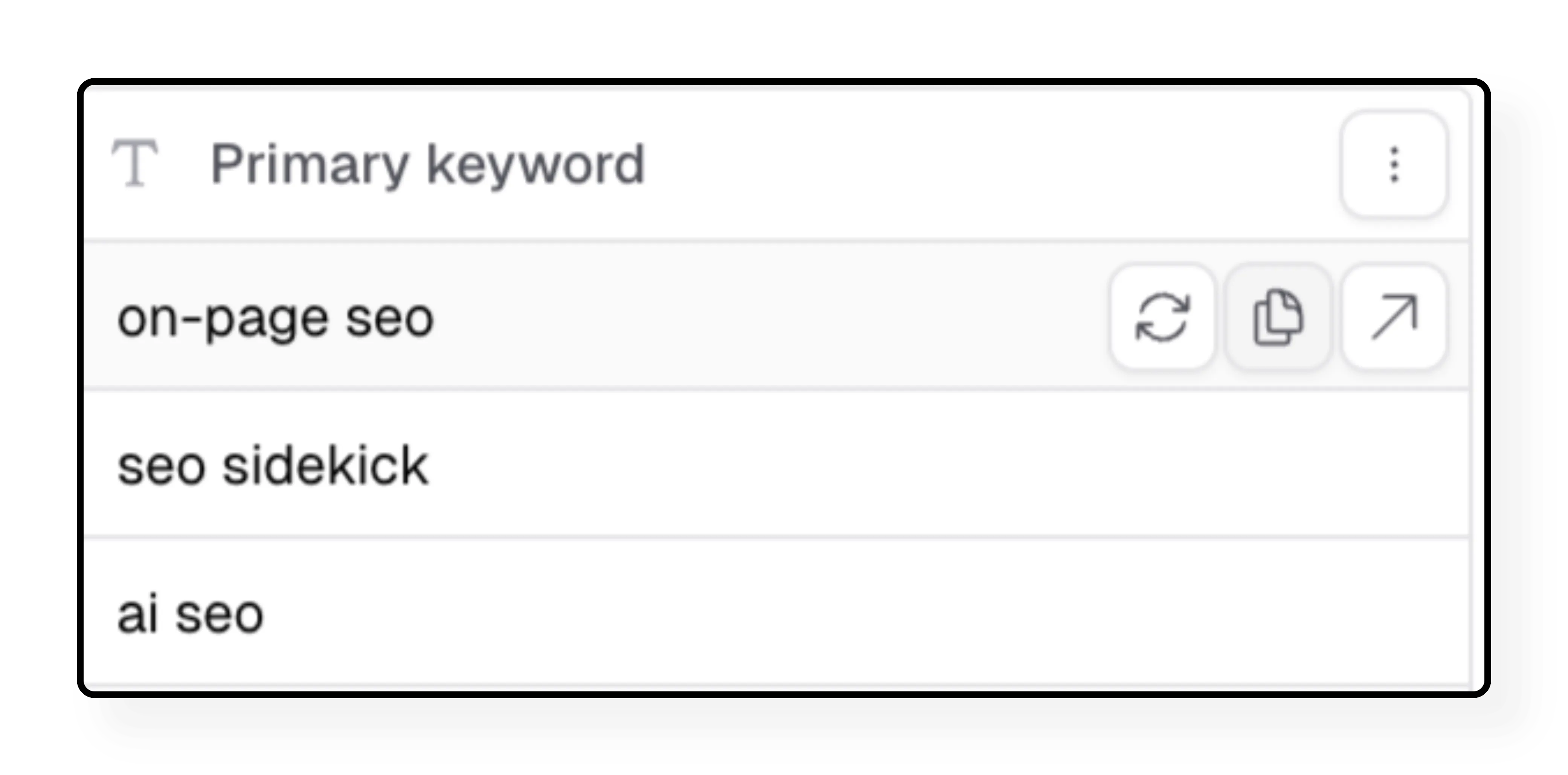Exporting Your Data
Learn how to export your SEO optimizations from MetaMonster as CSV files or markdown. Discover best practices for clean exports and efficient implementation workflows.
You’ve generated all your optimizations - primary keywords, metadata, schema, internal links, and more. Now you need to get this data out of MetaMonster to implement it. This guide shows you how.
When to export
You’ll typically export your data when you’re ready to:
- Hand off optimizations to a client or VA
- Import data into your CMS for implementation
- Work with the data in a spreadsheet
- Share results with your team
Using the export button
Click the “Export” button in your toolbar to open the export options.
You’ll see two choices:
CSV export: Download your data as a spreadsheet
Markdown export: Download just the page content in markdown format (useful for feeding to other AI tools)
Most of the time, you’ll use CSV export for optimization work.
Selecting columns to export
After choosing CSV, you’ll see a list of all available columns in your table. Select only the columns you need.
Common export selections:
- URL (almost always include this)
- Your generated optimizations (titles, descriptions, H1s, schema, etc.)
- Skip intermediate columns like “primary keyword” unless you specifically need them
Pro tip: Only export what you actually need. This keeps your spreadsheet clean and focused on implementation.

Downloading your export
Click “Export” and MetaMonster will generate your CSV file.
Once it downloads, you can open it in any spreadsheet program (Excel, Google Sheets, etc.) and use the data however you need.
Alternative: Copy individual items
Don’t need a full export? You can copy individual cells instead.
Hover over any cell and click the copy icon that appears. This copies the content so you can paste it directly into your CMS or wherever you need it.
This is useful when you’re implementing optimizations one page at a time.
![]()
CMS integration
You can also connect MetaMonster directly to your CMS to automatically sync page titles and meta descriptions, with more fields coming soon.
We’ll cover CMS integration in a separate guide.
Tips for clean exports
Filter before exporting: Only export the rows you actually need by using filters
Select relevant columns: Don’t export everything - just what you need for implementation
Name your exports clearly: When downloading, give your CSV a descriptive name so you can find it later
Next steps
Now that you know how to export your data, you’re ready to implement your optimizations. Check out our guide on CMS integration to learn how to sync directly to WordPress (with more platforms coming soon).
Need more help?
Can't find what you're looking for? Email us at support@metamonster.ai or chat with our team.